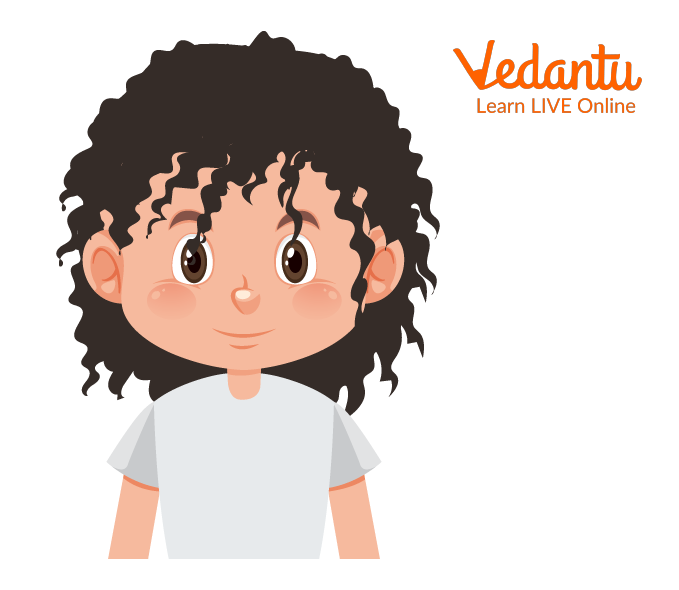Introduction to the Poem
Henry Wadsworth Longfellow wrote the rhymed poem "There was a Little Girl", which is about his young daughter Edith. The poem has 8 lines and is written in the rhyming couplet style. It explains how as a toddler, Edith's mischievous side would emerge at times. In this poem, Longfellow uses a playful tone to convey his point to the readers. It's kind of like he's relating to the reader in an intimate manner and sharing with them how his daughter was before growing up and how she behaves now as well as during her baby years.
There Was a Little Girl Poem:
There was a little girl
Who had a little curl
Right in the middle of her forehead.
When she was good,
She was very very good
But when she was bad
She was horrid.

Little Girl with a Curl on her Forehead
The Significance of There Was a Little Girl Poem
This poem is a ballad about a little girl and his changing behaviour. The narrator compares both her good and bad behaviour with how a curl on the little girl's forehead behaves in the same situations.
What Do We Learn from There Was a Little Girl Poem?
We see that, in the poem, if the little girl is good, her hair is well-behaved in a tight, spiral coil. But when she misbehaves, it looks wild, messy, and uncontrollable. This is what we are taught about people as well. If they are good then they are very kind to everyone, but if a person is bad then he or she becomes mean and nasty to others.
The Origin of the Poem
Ernest, the second child of Longfellow, comments on the above poem: "My father wrote and recited these well-known lyrics while he walked up and down the stairs holding his daughter, who was still a newborn, in his arms. Many people mistakenly believe that this is a Mother Goose rhyme, but this is the actual narrative "
Characters in the Poem
Every one of the characters is based on the author's kids. He came up with some interesting ways to write about his family. He wrote this when his daughter, a small girl, was still a newborn.
Henry Wadsworth Longfellow's Denial
Since he believed his trade had advanced since then and he did not want to be connected with such amateurish projects, he denied composing this in his early years.
The Metaphor
The poem has a strong metaphor for a baby. The "little curl" of the forehead is a metaphor for the baby's hair. The little girl represents the baby. This little girl is just like other babies, both good and bad. As she gets older, she starts doing bad things and is then seen as horrid. This poem talks about the way children grow up, and whether it will be good or bad for them.
Why Must the Poem be Used More Often?
It matters how he described inappropriate behaviour as horrid. Given how much tolerance has been given to out-of-order children throughout the years, one must assume that descriptions need to be utilised more frequently these days.
The Underlying Meaning behind the Lyrics of the Poem
This nursery rhyme's lines make it clear that youngsters were misbehaving even before the internet and video games were created. Kids continued to be kids even when there were just nursery rhymes to read. Well, guess that means certain elements remain the same. And that is the poem's primary meaning.

Little Girl Growing up and Doing Horrid Stuff
Summary
This poem talks about how children have to behave and when they don't they are called 'horrid'. This poem is just teaching children that you have to be nice to people and act right, or else people will think you are horrid.
This hymn for kids would not be one of the top choices or favourites, but it makes its point and is accompanied by a chuckle and a giggle. Not only is this a very sweet poem but it also teaches children how to behave when they are told to be good or bad.


FAQs on Little Girl Poem
1. What is meant by couplet rhyming in a poem?
It means that you are using two lines that rhyme with each other to make one line of poetry. A couplet is a phenomenon When two lines rhyme:
For Example;
He's no oil painter but he's my delight.
All of the girls want him on the first night.
If you read those lines aloud, they should rhyme which means that they are a couplet.
The couplet rhyming is often used to create rhythm and flow in poetry.
2. How would you describe the tone of the poem?
The poem is almost like the author is taking the readers behind the scenes to a family's life and showing how he was there. Part I of this poem is written in the second person: which shows that the author is taking charge of his baby sister's life, making choices for her by controlling her actions.
3. How is this poem related to kids?
This poem is basically talking about a little girl, who had a curl in the middle of her forehead, and when she was good she was quite good, but when she misbehaved she was horrid. The poem is about a little girl, who was taught to be good, and so she always was good. The first four stanzas are about how well she behaved when she was good. The last two stanzas tell us what kind of person she is when she isn't being good. It's like having someone telling you that if you don't behave yourself then they're going to do something bad to you.





